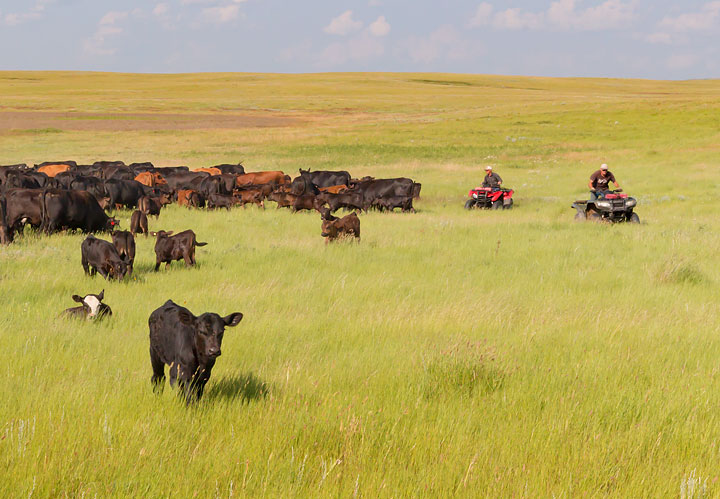A few key practices can reduce internal parasite resistance

Resistance is something we currently hear a lot about in agriculture, including the issue of parasite resistance in beef cattle. As spring approaches, producers may have questions about their parasite management decisions. How can livestock operators effectively manage internal parasites in their herds? What can they do to reduce the risk of parasite resistance?
Parasites are a normal part of the gut flora of pastured cattle. Left unmanaged, however, internal parasites can cause insidious production losses including a reduction in weights. Dr. John Gilleard, with the University of Calgary’s Faculty of Veterinary Medicine, covered internal parasite management in beef cattle during a recent BCRC webinar.
Strategies to Managing Parasites (BCRC Webinar)
Grazing management, proper biosecurity protocols, monitoring parasite loads, and strategic deworming are all tools producers can use to manage for parasites. Gilleard also suggests following the “Five C’s:”
Correct product – using two separate classes of parasite control products with two different modes of action (i.e. fenbendazole and ivermectin) is most effective.
Correct animal – different classes of cattle will have different parasite challenges. Producers should work with a veterinarian to identify the unique needs of their cows, grass stocker cattle, weaned calves, or feeder cattle.
Correct dosage – parasite control drugs are administered based on weight. Using the incorrect dosage, particularly under-dosing, may put a herd at risk of resistance. If in doubt, producers should round up to ensure the animal receives enough product, however it is best to weigh each animal and determine each dose accordingly.
Correct timing – fall-only application of a dual internal/external parasite pour-on product may not adequately protect cattle against internal roundworms. Spring and fall application of an internal parasite product (i.e. fenbendazole) may be necessary, but this should be based on a herd risk analysis.
Check for efficacy – conducting fecal egg counts in manure samples following control will help producers determine if their strategy is working. Because a herd’s parasite load is not evenly distributed, some animals, particularly those in good condition, may be unaffected by parasites. Producers may opt to leave 10-20% of their healthiest cattle untreated to slow the rate of resistance development.
Learn more about Parasite Management (BCRC Web page)
Like all past BCRC webinars, you can watch the full recording at any time:
Click here to subscribe to the BCRC Blog and receive email notifications when new content is posted.
The sharing or reprinting of BCRC Blog articles is welcome and encouraged. Please provide acknowledgement to the Beef Cattle Research Council, list the website address, www.BeefResearch.ca, and let us know you chose to share the article by emailing us at info@beefresearch.ca.
We welcome your questions, comments and suggestions. Contact us directly or generate public discussion by posting your thoughts below.